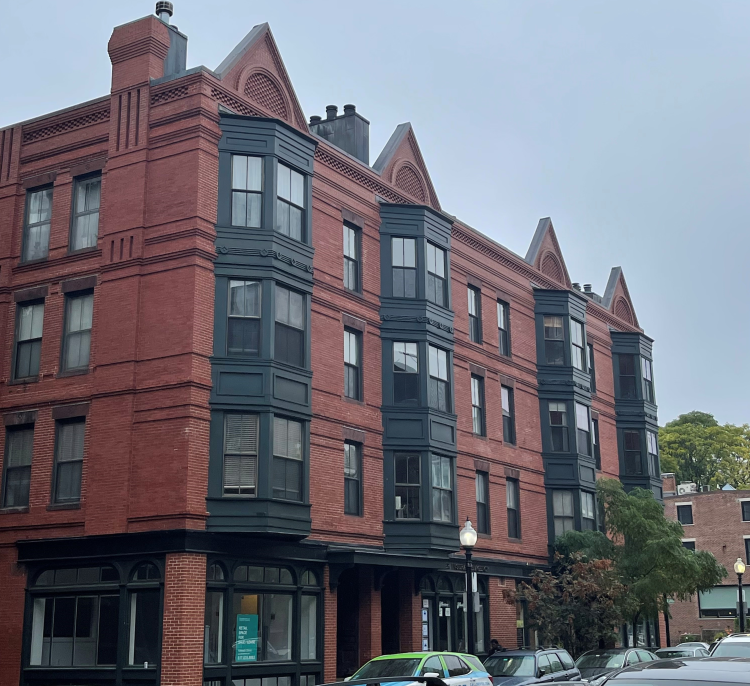
A ground-breaking market summary report characterizing the commercial building stock in the Commonwealth is shaping the direction of MassCEC’s newest pilot program, BETA: Commercial Buildings. The market summary report was developed by Slipstream, the lead technical consultant for the pilot, and their sub-consultant team. The objective of the pilot is to help existing commercial and multifamily buildings eliminate their use of fossil fuels through the development of resources that will facilitate their decarbonization/electrification. Ultimately, widespread building decarbonization projects are necessary for Massachusetts to reach its 2050 greenhouse gas reduction goals for this sector.
Commercial and large multifamily building owners who are interested in participating in the pilot program, professionals who work with commercial and large multifamily buildings, facilities managers of commercial and large multifamily buildings, and anyone curious about commercial building typologies, energy use, and emissions in the Commonwealth may be interested in reading the market summary report. The report gives direction on which commercial building types and vintages are most prevalent and which building types have the highest energy use and emissions.
As a preparatory step to collecting data, Slipstream worked with MassCEC and stakeholders to identify priority characteristics for the types of buildings to target in this initial pilot. The agreed-upon characteristics were
- High-Impact Scaling: The types of buildings selected for participation should have characteristics that will make it easier and more impactful to scale the decarbonization approaches to the state-wide population of commercial buildings.
- Environmental Justice: Commercial and multifamily buildings in designated EJ communities may have unique challenges and opportunities associated with decarbonizing that must be understood so that EJ communities can be served.
- Widespread Applicability: Participating buildings should feature a variety of HVAC system types, ages, sizes, ownership structures, and retrofit pathways so that lessons learned from the Pilot can apply broadly.
Through analysis of public data sources and relevant market research reports, Slipstream identified key building characteristics, such as primary building use, HVAC system, environmental justice indicators, size, vintage, square footage, energy use, and emissions. Slipstream used these characteristics to distinguish between key building typologies that would follow common decarbonization pathways, which could be further developed through this Pilot.
Slipstream also developed “building block” categories to assist in summarizing key findings. For each of these aggregate categories, the chart below illustrates a comparison between total area, number of buildings, and percent of total emissions.

Here's a preview of some other details to be found in the full report:
Building Size
Large buildings exceed 50,000 ft2 or 15 to 50 units for multifamily buildings. Some distributions including office, warehouse and storage, and mercantile have a higher frequency of both smaller and large buildings but relatively fewer “mid-size” structures.
Vintage
Three vintage categories were compared to provide a proxy for building envelope and non-retrofit system performance. Slipstream studied pre-1980s buildings, buildings built between 1980-2004, and post 2004 buildings to determine if building code played a role in insulation and energy performance.
Simplified HVAC Types
HVAC types are categorized into five main groups based on ComStock and ResStock groupings. HVAC system electrification has the largest potential for emissions savings across most commercial building typologies. However, these systems vary significantly and may require nuanced solutions.
Heating Fuels
Reducing or eliminating on-site heating fuel usage is a key component of decarbonization. Slipstream studied the amount of fossil fuel and electric heating usage to determine the magnitude of the electrification process and heat pump deployment.
Next Steps
After analyzing the data collected, Slipstream revisited the priority characteristics described above and assigned priorities to various building groups and subsets. The resulting prioritization table, included in the Recommendations section of the report, will greatly assist in outreach and enrollment of an optimized cohort of buildings for the Pilot. MassCEC looks forward to the upcoming building solicitation step of the BETA: Commercial Pilot Project. Stay tuned for more details and next steps!